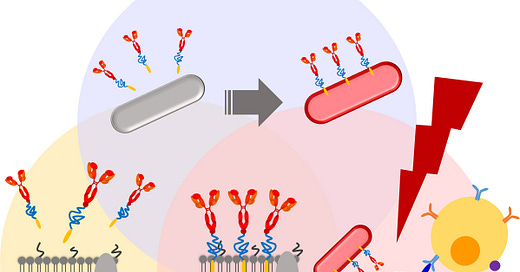[Image: Eijiro Miyako]
As with all of our What’s New Monday posts, the key points from the article are quoted below. This week covers fascinating new research out of Japan on the versatile Rhodopseudomonas bacteria, a purple non-sulfur photosynthetic bacteria.
Researchers in Japan have demonstrated a new approach for enhancing purple photosynthetic bacteria. Their process, which involves simple chemical functionalization, preserves the innate medicinal qualities of the bacteria while enhancing their ability to fight cancer.
…it is spatiotemporally activatable by near-infrared light and shows strong photothermal conversion—the ability to turn laser light energy into heat, in this case to selectively eliminate cancer cells. This is thanks to its bacteriochlorophyll (BChl) light-harvesting nanocomplexes, which are useful for targeted optical cancer therapies.
Finally, the researchers tacked on an immune checkpoint inhibitor antibody known as anti-PD-L1 using the same BAM method. Cancer cells express a protein called Programmed Cell Death Ligand 1 (PD-L1), which suppresses the host’s immune response and allows cancer cells to evade detection and elimination. Anti-PD-L1 antibodies block PD-L1, thus preventing cancer cells from flying under the immune radar and allowing them to be targeted by the host’s immune system.
Test showed inhibited tumor growth when injected in mice with colon cancer. However, all the varieties had an especially dramatic anticancer effect when excited with an NIR laser at 0.7 W for 3 minutes. …the most effective during the primary treatment stage and also cured tumors faster than the others.
Unfortunately, it may be another ten years before this cancer treatment is perfected and available.
Source:




